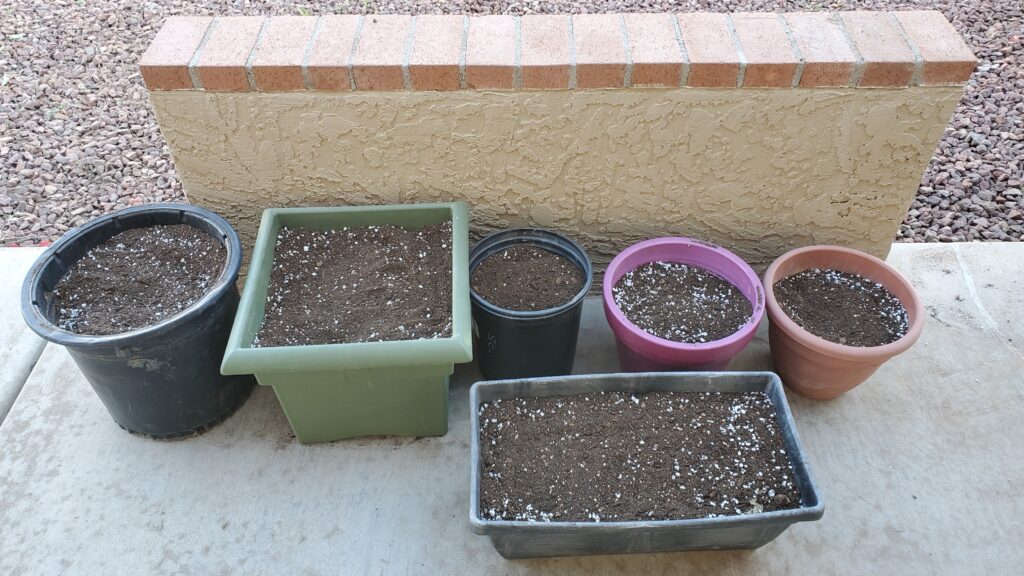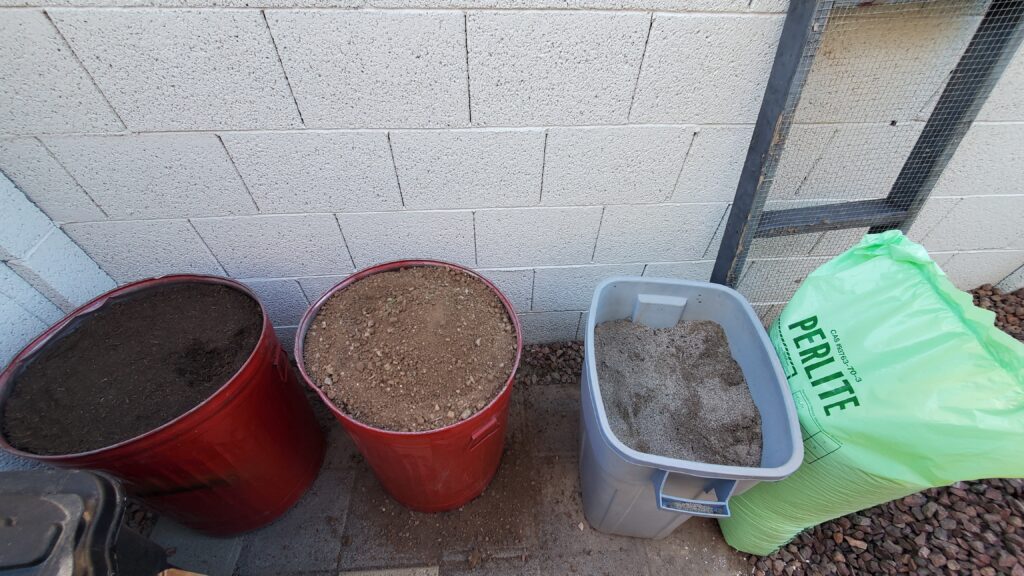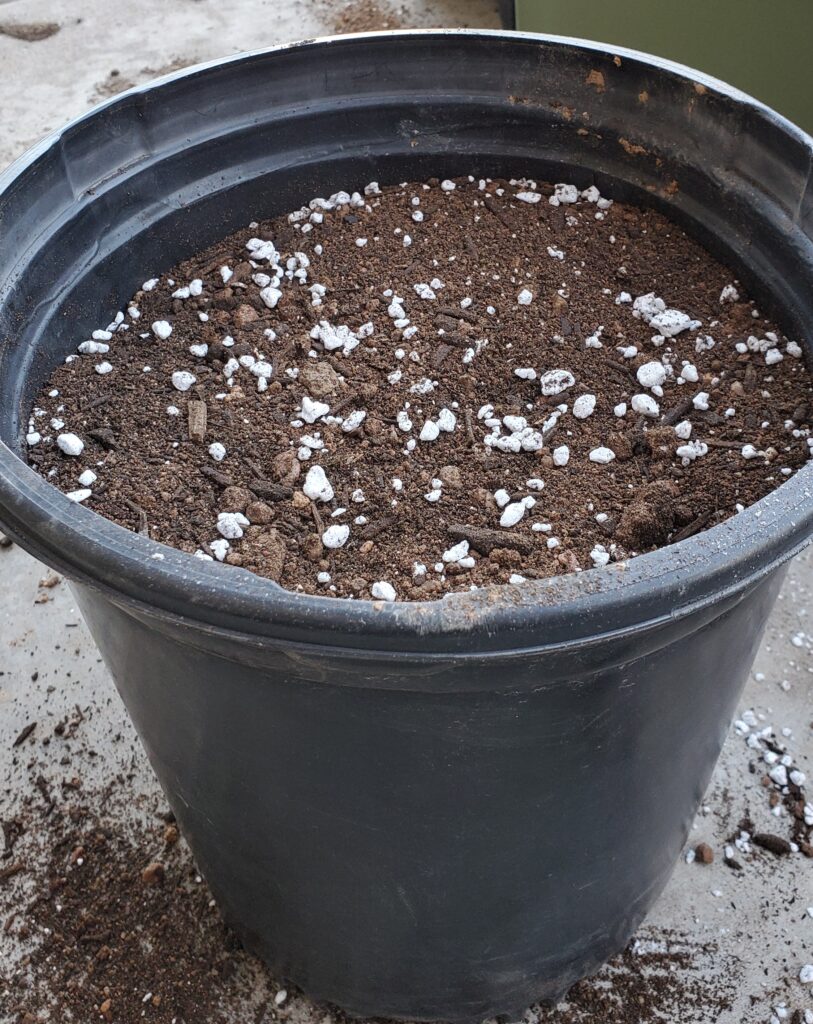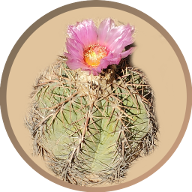
One of my pet peeves is recipe websites that make you scroll through pages of useless stories prior to getting to the ingredients and instructions. So I am going to start with the recipe and follow with the explanations.
- 5 parts fine compost
- 2 parts perlite
- 1 part native desert soil (clay)
- 1 part sand

Native Desert Soil (Clay)
Although native desert plants typically grow in 100% native desert soil (which is usually clay and rocks), that won’t work well in planters. The clay holds water and does not drain, which makes it difficult to water the plants quickly and risks root-rot if they are over-watered. The clay is super heavy and will make your planters very difficult to move around. Nevertheless, I still use a small amount of clay in my planters because it is alkaline, which counteracts the acidity of compost. It also contains minerals that the native plants may rely on. I use a 1/2″ soil sifter to remove the rocks from the native soil. The sand is added to prevent the clay from compacting and to improve its drainage. To get native soil I typically look for local “free fill” advertisements on Offer Up or Next Door. Some people frown upon using free-fill soil, claiming that the soil may be drity. Yes, there may be some dirt in it…
Perlite
Perlite is a volcanic glass, although it often seems like styrofoam because it is white and light. Perlite serves several purposes: drainage, aeration, reducing compaction, and reducing weight. It has a neutral PH of 7 to 7.5. Due to its light weight it will float in water and can easily blow away in wind. Make sure to dig it into your soil and not just sprinkle it on the surface. If you use a lot of planters like me, then getting the large bag of perlite makes more sense. I got a 3.5 cubic-foot bag of perlite for only $30 at the local Sea of Green hydroponics store.
Compost
A good quality compost is the basis of any potting soil. It is medium weight and rich in nutrients. It holds moisture but it also drains quickly. It is a product of “organic recycling” so it often prevents waste from going to the landfill. Of course, the exact composition depends on what materials were composted. I get bulk compost from Arizona Worm Farm, which is composed of horse manure, food waste, basalt rock dust, and mulch from landscape waste. In the past, I used to go to Tempe Compost Yard when they offered compost in bulk. Bagging soil produces huge amounts of unnecessary garbage. There is a compulsion in our society to put every we purchase inside of plastic bags.
I also produce my own compost at home. I add this as a supplement to my planters. It is typically more nutrient rich than the compost I purchase in bulk.

Variations for Different Plants
The planter mix that I described above is good for potting most of my native desert plants. This is partly because they all share some common requirements.
- Good drainage -> prevent root-rot and speed up hand-watering
- Light weight -> easy to move around
- Non-compacting -> provide aeration for roots and prevents transplanting damage
One exception I have is for cuttings. I grow my cuttings in a mixture of sterilized coconut coir and perlite to prevent rot while waiting for roots to sprout. Once established, I transplant them into my standard planter mix.
Some people say that you shouldn’t grow cacti in compost because it is not natural for them. However, trying to grow cacti in the native soil of Arizona (clay and rocks) is a disaster. It compacts into a cement like substance that doesn’t drain or aerate roots. It is super heavy and will guarantee root damage when transplanting. I have had better success growing cacti in the mix described above.
